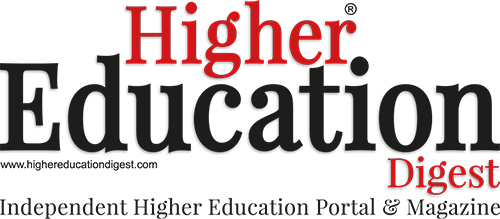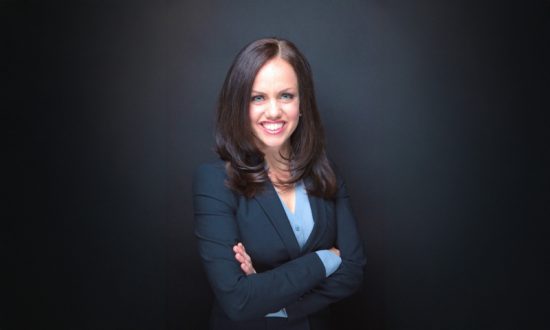Ahava Silkey-Jones is a national leader in the arts, education, and civic sectors. As Vice Provost of the School of Creative Arts, Entertainment and Design at Dallas College, she oversees strategy, operations, partnerships, and programming. Dallas College serves over 127,000 students across seven campuses. A former K–12 principal and executive director, she co-founded the Professional Theatre and Dance Youth Academy and served two terms on the Minneapolis Arts Commission. A Harvard alum and policy fellow, she is committed to equity and access in the arts. Her work centers on students, partnerships, and creating career pathways through the power of the arts.
Recently, in an exclusive interview with Higher Education Digest, Ahava shared her insights on the most pressing challenges facing arts education and creative industries and how to address those challenges, significant career milestone, words of wisdom, and much more. The following excerpts are taken from the interview.
Hi Ahava. What drives your passion for the arts and education, and how do you stay current with industry trends and developments?
My passion for the arts in education is driven by the impact I have seen the arts have on students’ lives. Through learning in and through the arts, students develop confidence and find a space to express themselves. They experience deeper levels of fulfillment and are better equipped to contribute to a more expressive, creative, and just society. There are so many career pathways that rely on creative thinking. I love helping students pursue their artistic passion professionally or leverage their arts experience to explore other workforce opportunities. I have seen firsthand how the arts create access, build confidence, and connect people to purpose. That is what drives me. To stay current, I engage with a wide network of local and global colleagues working in the arts, education, and business fields to ensure that our programs are relevant and aligned with the needs of today’s workforce. Most importantly, I stay connected to the voices of students, artists, and educators.
What do you love the most about your current role?
I love being part of the arts community in Dallas. Dallas is such a thriving city with a deep appreciation for the role of arts and culture in shaping its future. I consistently receive enthusiastic responses when partnering to promote the work of our students, alumni, and faculty. One of the most fulfilling aspects of my role is building bridges between civic and community organizations, businesses, the city, and the college. We are increasing the visibility of our students and programs at an exponential rate, equipping students with a high-caliber education, and connecting them to real career opportunities in the arts. It is an exciting time for the arts in Dallas!
What do you believe are the most pressing challenges facing arts education and creative industries, and how do you address these challenges?
The most pressing challenges facing arts education are funding and insufficient policies to ensure equitable access for all students. While the impact of arts education is undeniable, access to high-quality programs is often tied to resources. Many students do not have opportunities to attend performances, take lessons, or participate in extracurricular arts programming outside of school. We must ensure that every student, regardless of background or zip code, has the opportunity to thrive in the arts. This includes building pathways into creative careers and challenging the misconception that artistic fields are not viable professions. To address these challenges, we focus on building strong partnerships across education, industry, and community. We advocate for policies that prioritize equity and access, and we design programs that are both visionary and grounded in workforce relevance.
How do you see the role of arts education evolving in the future, and what implications will this have for society?
It is my hope that arts education will become increasingly integrated into core curriculum so that students are prepared for a rapidly evolving world. Arts learning supports innovation, leadership, and connection. There are also booming economies in creative fields right now, in particular related to film and digital art and design. It fosters the flexible thinking, creativity, and problem-solving skills needed for students to thrive in the future. I see arts education becoming more interdisciplinary, integrated into community, and central to economic development. As automation and artificial intelligence reshape the workforce, creativity, collaboration, and empathy will be among the most essential skills we can teach. The implications for society are significant. Arts education will shape more adaptable, empathetic, and forward-thinking citizens who can lead and contribute in meaningful ways.
Can you share your perspective on the importance of diversity, equity, and inclusion in arts education, and how you promote these values in your leadership practice?
Inclusion is fundamental to the arts. It is a space where people can bring their full selves and where diverse voices are valued and celebrated. In my leadership, I work to create programs and environments where all individuals feel seen, heard, and respected. This includes partnering with community-rooted organizations and ensuring that our programming reflects the identities and cultures of our students. The arts are uniquely equipped to break down barriers and foster understanding across differences. Diversity, equity, and inclusion are not separate priorities. They are woven into the fabric of how we lead, create, and serve.
How do you see your role as a leader in the arts and education sectors evolving in the future, and what impact do you hope to make?
I see my role continuing to grow through building partnerships, expanding access, and advocating for the arts in education and beyond. There is a continued need to raise awareness about the importance of arts programming and to create strong, sustainable connections between public institutions and private or nonprofit partners. Working with schools can be complex due to bureaucratic structures, but I am committed to removing barriers so that partnerships can flourish. I hope to expand my advocacy efforts and contribute to national and global conversations about the role of the arts in education, workforce development, and community resilience. The impact I hope to make is twofold. I want to create lasting and equitable pathways for students to access creative careers. I also want to help build systems that embrace creative leadership and nurture collaborative, community-driven solutions.
How do you prioritize your own well-being and self-care given the demands of your work?
Self-care looks a little different in this season of my life. I have two small children and a demanding career, but I truly love what I do. Attending student events, connecting with local artists and civic leaders, and spending time with my family fills my cup. While my schedule is full, it is filled with things I care deeply about. I also make time for small moments that ground me. I go for walks or runs when I can, explore new trails or bike paths with my kids, and travel whenever I get the chance. Each morning begins with a cup of tea and a few quiet minutes to reflect before the day gets started. I still believe it is possible to have it all. As long as I am surrounded by family, friends, and a community that inspires me, I feel balanced and energized.
Who has been a significant influence or mentor in your career, and how have they helped shape your professional journey?
I’ve had many incredible mentors, but Peg Birk, CEO of Interim Solutions, made a lasting impact on my life and career. Although I worked with her for a very brief time, her influence was profound. Peg was a powerful presence, someone I admired immediately and aspired to emulate. She saw my strengths, challenged me to grow, and gave feedback that changed the way I led. Her guidance helped me navigate complex political challenges early in my career and gave me the confidence to lead boldly. We’ve since built a lasting friendship, marked by an annual walk around the lake near her home, a time to reflect on the journey. Peg has been a source of strength, affirmation, and inspiration. When she sees and believes in the work I’m doing, I know I’m on the right path.
What has been your most career-defining moment that you are proud of?
One of the most defining and proudest moments of my career was helping to save the Perpich Center for Arts Education. At a time of intense public scrutiny and political pressure, I worked alongside an extraordinary coalition of board members, parents, alumni, and community advocates to fight for the school’s future. I testified before the Minnesota legislature to share the impact of our work and advocate for the continued funding and support of the school. It was a difficult but deeply meaningful experience. That moment affirmed my commitment to public service and helped clarify that this is the work I am meant to do. It shaped how I approach leadership today by reinforcing the importance of coalition-building, advocacy, and staying rooted in the mission of access and opportunity for all students.
What advice would you give to aspiring leaders looking to drive positive change in the arts and education sectors?
Build strong relationships with people who are doing the work. The arts and education fields are deeply connected, and once you begin making your mark, more doors will open. Stay grounded in your “why.” That purpose will guide you through the inevitable challenges and keep you aligned with your values. I have had opportunities to leave education, but my purpose is centered around students. That has always been my anchor. This work requires vision and a willingness to lead even when the path is unclear. Do not wait for permission to lead, when your moment shows up, lead with integrity and commitment, people will take notice. Learn how systems function, work to improve them, and never underestimate the power of the arts to shape how people see themselves and each other. Change happens in community, over time, and through collective action. Your work matters.




